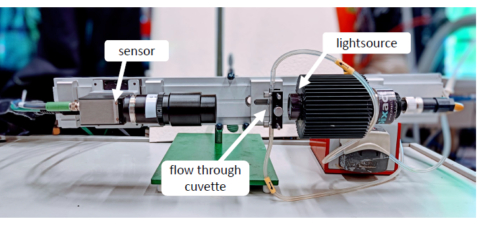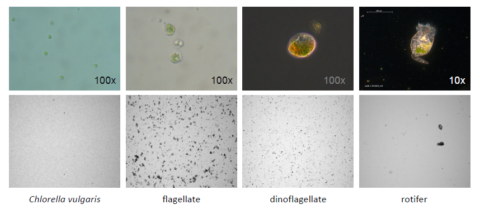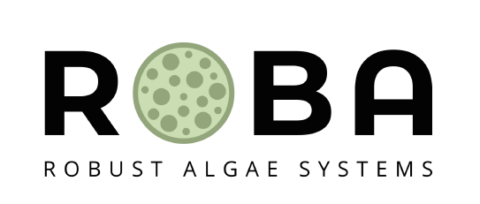Early detection of microalgae culture contamination – Project ROBA
Motivation
Biological contamination is one of the biggest bottlenecks in microalgae cultivation, preventing the commercial viability of large-scale processes especially for bulk products. VTT Technical Research Centre of Finland conducted a study on how to detect contamination earlier to enable intervention and save the culture. The study is part of project ROBA, that aims to develop intensification methods for large scale algal cultivations.
Implementation
A Pixact Particle Monitoring (PPM) system with Pixcell flow through cuvette was used to image both pure and contaminated microalgae cultures. The sample was pumped from reactor to cuvette and then back to reactor. All components in contact with algae were autoclaved to ensure hygienic sampling.

Pixcell measurement device
Upper row: microscopic pictures of Chlorella culture and the contaminating organisms
Lower row: corresponding Pixcell images of pure and contaminated culture, respectively.
Benefits
With real-time image and numerical data, researchers can follow the cultivation in real time and react on contaminations earlier than with manual sampling.
Process parameters
| Bioprocess type | Microalgae cultivation |
| Size distribution | 5µm…250µm |
| Temperature | 20 °C |
| Pressure | Ambient |
| Other remarks | Measuring living organism |
Source (download from button below): AI-aided at-line microscopy for monitoring of microalgae culture contamination: Gopal Peddinti, Tuija H. Sarlin, Jenni M. Limnell, Eevi A. Hyttinen, Anu M. Tamminen, Mervi H. Toivari and Dorothee Barth; VTT Technical Research Centre of Finland
Read more about project Roba: https://www.vttresearch.com/en/news-and-ideas/data-driven-methods-boost-microalgae-production-and-co2-capture

